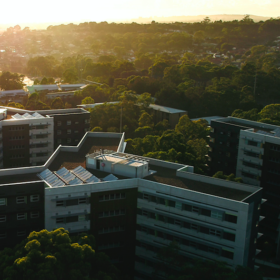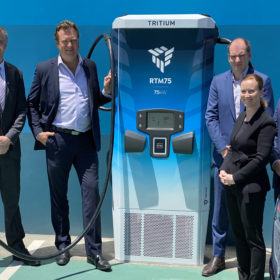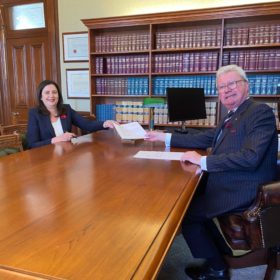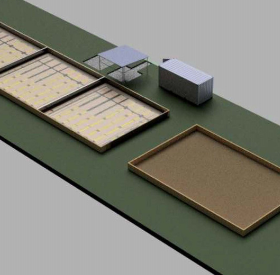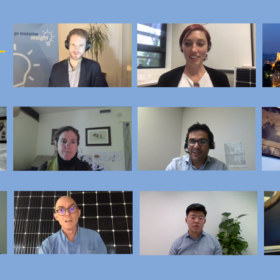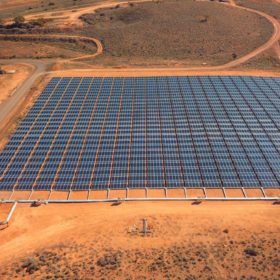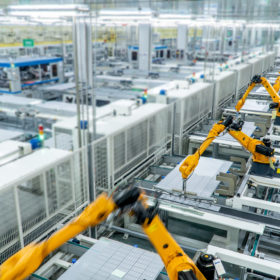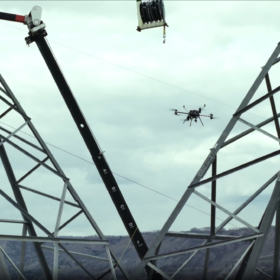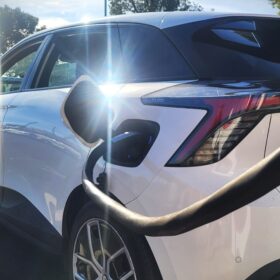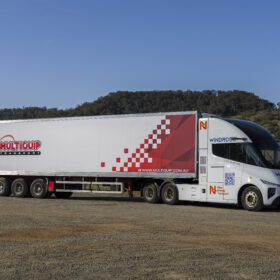What’s NUW in energy? An alliance of three NSW universities concentrates clean-energy expertise
Recognising that the major problems facing the world can’t be solved by any one organisation, three New South Wales universities at the peak of renewable-energy research have rewritten the rules of collaboration to influence policymakers and accelerate solutions to market.
Long-term assessment of PV panel degradation under hot, humid tropical climates
A Dutch-Hungarian research team has measured, for 12 years, the degradation rates of PV modules installed in an off-grid system located in Ghana. It found that the panels had an average annual decline in power yield of 3.19%.
Tritium launches scalable EV charging solution
Brisbane-based global EV charging powerhouse Tritium has unveiled a scalable solution which will give peace of mind to network operators and governments the world over. The solution, launched in tandem with the next-gen RTM75 DC Fast Charger, knocks down one of the few remaining obstacles to large scale EV charger uptake.
Carbon nanotube gives batteries a boost
Scientists in the U.S. examined the use of different conductive filler materials in a lithium-ion battery electrode, finding that adding single walled carbon nanotubes to a nickel-cobalt-manganese cathode resulted in better electrical conductivity and higher rate capability for the overall battery. The results, according to the group, could provide new insights into design of high power, high energy battery electrodes.
QLD establishes ministry for hydrogen as Australia moves ahead in the global race for H
In an Australian first, newly re-elected Premier of Queensland Annastacia Palaszczuk has established a ministry for hydrogen in her new government. The move comes amidst a raft of recent hydrogen related policies throughout Australia and reinforces the nation’s determination to lead the global race for a hydrogen economy.
Deakin University’s $2.3 million Hydrogen Test Bed gets underway
Deakin University’s Hydrogen Test Bed is set to position regional Victoria at the cutting edge of hydrogen research. The facility and its research is looking to determine whether Australia’s current gas infrastructure can be repurposed for the use of clean hydrogen.
Insight on Quality – the prickly issue of PV module warranties: big promises and little recourse
PV modules are being sold with ever longer warranties, but when modules underperform or fail, making claims on those warranties is rarely straightforward. So are the warranties worth the paper they’re written on? Where does this leave installers? And how can this liability be mitigated?
South Australia on the front foot with $240 million green hydrogen export project
The South Australian government has followed up the launch of its Hydrogen Export Prospectus last week with a straight drive on the front foot, $37 million in funding for export infrastructure upgrades in support of the a $240 million green hydrogen and green ammonia project which will make South Australia a global leader.
Terawatt scale by 2050
In a new paper published in the journal of Renewable and Sustainable Energy, renowned PV scientist Pierre Verlinden examines the solar industry’s trajectory towards the 70 TW of installed capacity that will be needed by 2050, as the best choice for meeting climate targets set out in the 2015 Paris agreement. Silver consumption and recycling, according to Verlinden, will be the biggest challenges in the years to come, as well as ensuring balanced growth and avoiding a major installation rush in the years close to 2050.
Solar-powered cooling system for crop storage
South African scientists have used a PV system to keep tomatoes in cold storage. They linked an air-cooling system and evaporative cooling tech to a 3.5 kW array and 12 batteries and tested it for 28 days in September.
